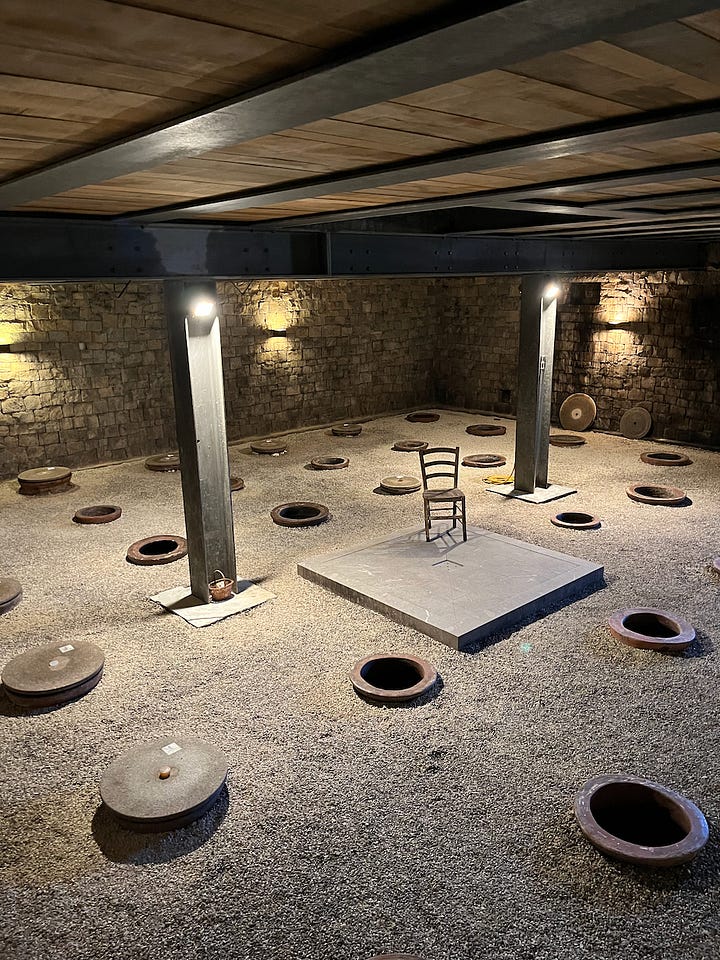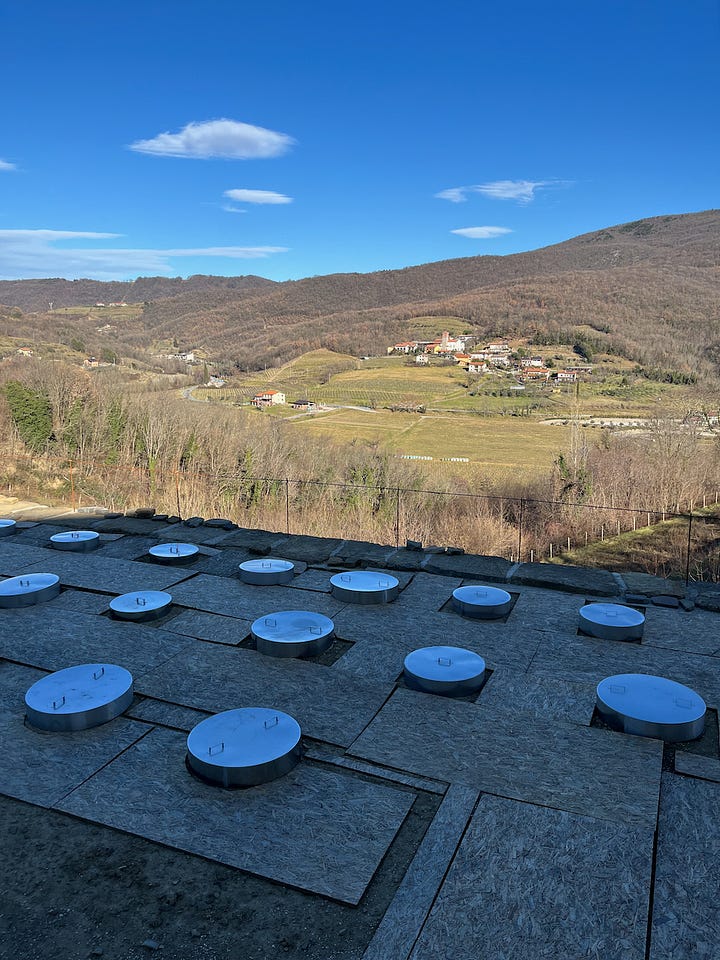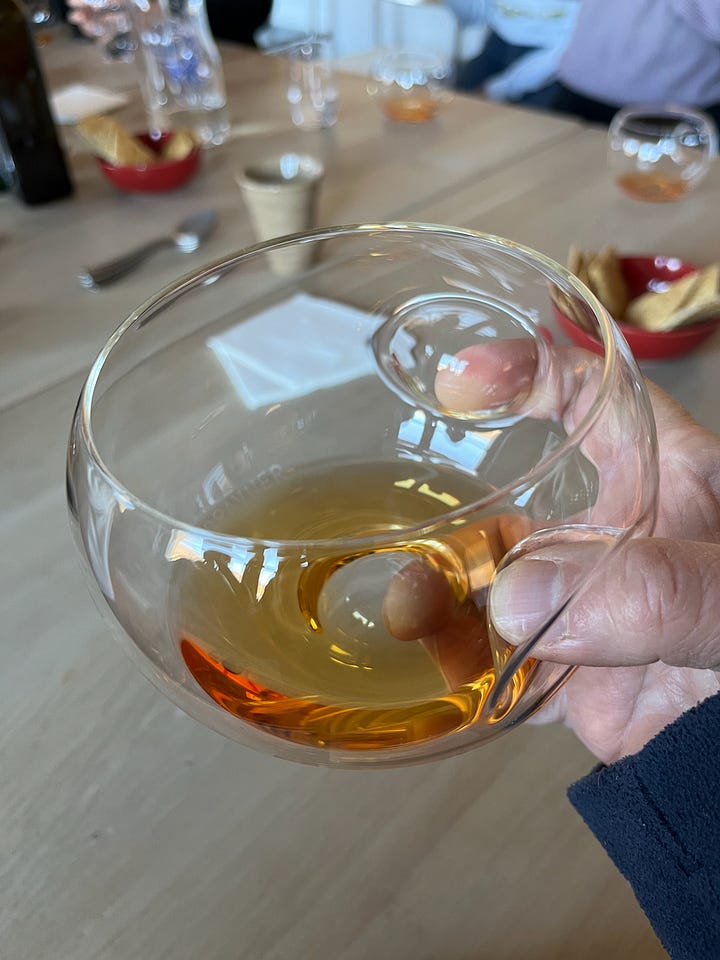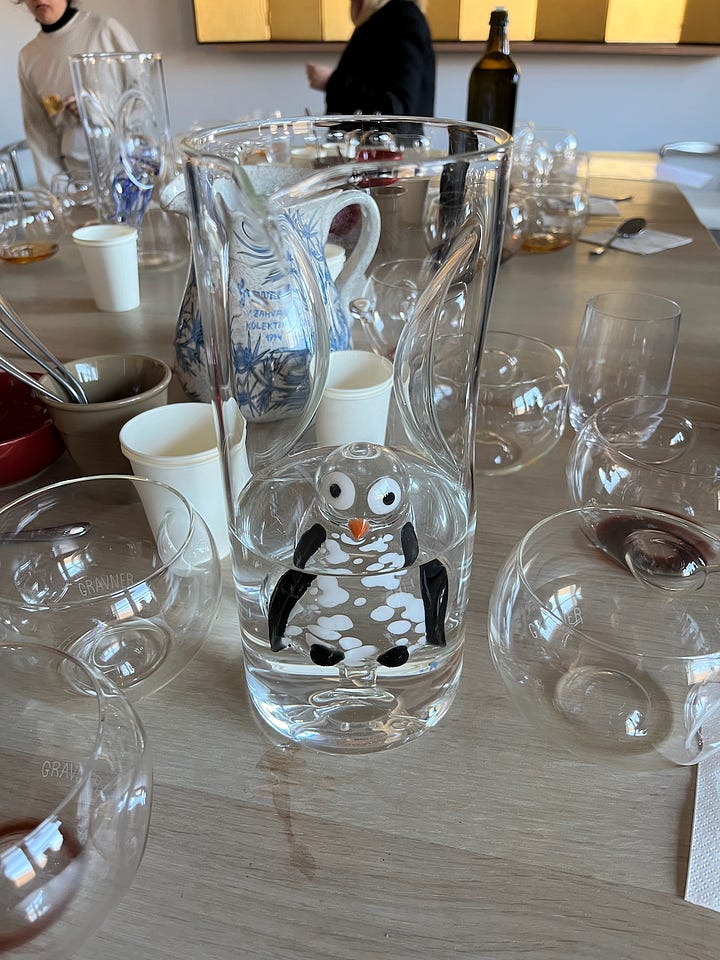The Ancient Art of Winemaking
Recreated -- to stunning results -- by an artisan vintner in far-west Italy
Winemaking is a simple process: you grow grapes, pick them, smash them, ferment them, and bottle them. Right?
Of course you know that’s not true, but you probably don’t know how truly untrue it is. Because everything matters when you make wine. And this might be even more true when you forsake modern technology and go back to old, even ancient, methods of wine-making, and gently, calmly, guide the wine from the grapes in the vineyard into bottles.
The Gravner winery and vineyards reside in a nearly perfect microclimate for growing grapes, in the small village of Oslavia, near the town of Gorizia, in the Friuli region of far-eastern Italy. The Italian-Slovenian border is so close you can see it from the Gravner tasting room — well, you could see it if it was a line on a map, anyway.
Josko Gravner knows that everything matters with winemaking, and so he takes everything into account. His Truth is the land, its cycles and transformations, its inhabitants — human and other — and the collection of all these, and many other factors.
“A way of life which embraces all the aspects of nature and takes the best of it, even in unfavorable conditions,” he explains on the winery website. “Nature offers everything we need. Our only task is to guide it, look after it and, when time is right, put ourselves at its service. Most importantly, we need to resist the urge of intervening, changing, cutting, building: sometimes nature requires time, silence, inactivity.”
That perfect vineyard microclimate comes from being halfway between the Julian Alps and the Adriatic Sea, with lots of wind, plenty of sunshine, and an extremely wide temperature range. The late morning we visited on our class study trip was perfectly still, but our hostess had earlier feared it would be too windy and cold for us to be outside. Still, even with the sun shining brightly on us, our feet had no problem feeling the cold.
The vineyard comprises 15 hectares (one hectare is about 2.5 acres, or 2.5 American football fields) of the estate’s 32, the remainder holding woods, meadows, and ponds, including a man-made water feature in the middle of the vineyard. This pond doesn’t directly help the vines or the grapes, but provides water for local birds and wildlife, and habitat for frogs the insects that sustain them all. It is Gravner’s way of giving back to the land and maintaining a healthy, biodiverse environment and natural balance.
“We can try to reduce the impact we have,” Mateja Gravner, Josko’s daughter, shared with us on our tour. “We have to consider not only what we like, but also what is best for the ecology, and for us.”
Let me say that again — they built a pond in the middle of the vineyard just for the local environment.
The local environment, now full of wineries and vineyards leveraging all that great climate, has suffered much. Josko Gravner’s home, more than 300 years old, was first purchased by the family in 1901. It was the only house left standing during the First World War, when it served as a makeshift hospital. An earthquake caused significant damage in 1976, and Josko renovated the entire structure in 1991, recreating much of the ancient building’s authenticity that had been lost — and unnecessarily added to — over time.
Josko takes the same authentic approach to winemaking. The Gravner homepage features a lunar calendar, honoring the long tradition of synchronizing agriculture activity with the position of the planets and phases of the moon. The vintner uses the moon calendar interpreted by Maria Thun, which shows the best days to work in the fields, to prune, to sow, and to harvest.
“To everything, turn, turn, turn, There is a season, turn, turn, turn, And a time to every purpose under heaven.” So sang The Byrds in 1965, from the Old Testament Book of Ecclesiastes. These are not new ideas — they are ancient ones.
The pruning is different for each grape variety, which each have their own annual schedule for pruning the small and then the larger branches. The decades-old bases and roots are left for next year’s growth, until, after decades of service, the old vines are replaced with new.
“The people who want to take part in this process and be equal among equals, albeit with a greater responsibility, know exactly when the only thing to do is wait for every stage in the life cycle to be completed,” Josko explains on the website. “To let the vine cycle come full circle year after year, calmly.”
As Josko took over the reins of the vineyard several decades ago, his father, patiently watched him acquire all the latest technology, only to later shed all that extra equipment and get back to the basics of truly ancient winemaking. The process uses no modern industrial tricks, not even steel tanks, but instead ferments the grapes in giant terracotta amphorae, custom-made and imported from the Caucasus, and then buried in the cellar. And also outside, as an experiment, because there are always new things to be learned.
How giant you ask? They are cleaned by hand by someone who climbs down into the casks.


The grapes endure a long maceration in these amphorae, with indigenous yeasts and without temperature control, for up to four or five months. The wine is then pressed from the skins (sometimes also from the stems, an extremely unique approach that adds more tannins to the wine), aged for up to four years in giant oak barrels, bottled, and then further stored in those bottles for up to ten years more before being offered for sale.
So special and unique are Gravner wines, Josko developed the winery’s own glassware for tasting. Hand-blown by Italian glass artist Massimo Lunardon, the glasses feature indentations for three fingers, are usable in either hand, and allow Gravner wines to breath so they can be enjoyed in the proper way.


All of these ancient processes result in sublime wines, from well-known pinot grigio to less-common native grapes Ribolla Gialla and Pignolo. Pignolo is so uncommon, in fact, it doesn’t have an official classification, so the winery must — legally, because these things are important — call it something else, in this case, Russo Brag.
But even as Gravner applies these ancient techniques, they are still surprised by how things work.
“In our fermentation process, we learned that carbon dioxide collects on the floor and flows into the casks, and that helps the long fermentation,” Mateja explained to us. “We did not know that. Everything matters.”
Everything matters.
###










What an incredible operation, on so many levels. Yes, everything matters.